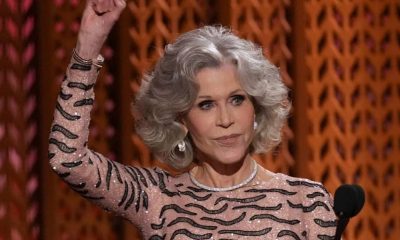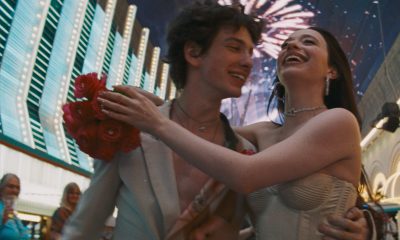Movies
Beat the heat at the movies
Ingrid Bergman, Bugs Bunny, Meryl’s latest, Reel Affirmations and more on summer slate
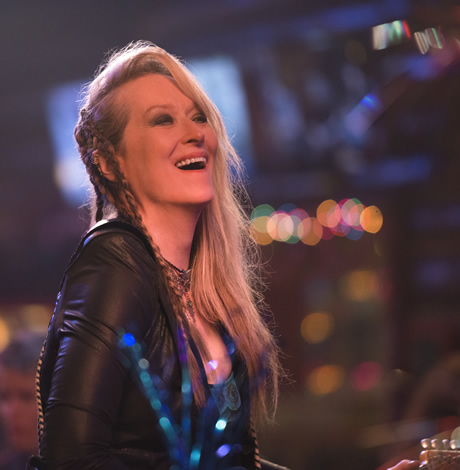
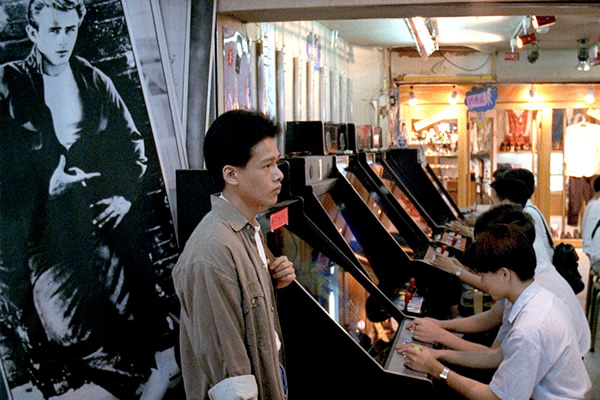
Hsiao-kang (Lee Kang-sheng) in ‘Rebels of the Neon God.’ A restored print of the 1992 Taiwanese classic is screening now at the Landmark Theatres in the Washington area. (Photo courtesy Big World Pictures)
One of the best places to beat the heat this summer in D.C. is inside a movie theater. Luckily for LGBT audiences in the metro area, there are films coming up to suit every taste.
Opening today at the Landmark Theatres is a newly restored HD print of “Rebels of the Neon God,” the 1992 debut film by openly gay director Tsai Ming-liang. The widely acclaimed Tsai is one of the central figures of the “Second New Wave” of Taiwanese cinema. He is frequently cited as one of the most influential living directors of international film and his works frequently appear on annual “Best Of” world cinema lists.
The loosely structured “Rebels” tells the stories of two disaffected Taiwanese youth whose lives intertwine as they ride their scooters through the neon-lit streets of Taipei. Taiwanese actor Lee Kang-sheng (Tsai’s cinematic alter ego who has appeared in all the director’s films) plays Hsiao-kang, a bored student at one of the cities’ buxiban (cram schools). Chen Chao-jung plays Ah-tze, a petty thief who sets the plot in motion when he smashes the rear-view mirror on the taxi driven by Hsiao-kang’s father.
American audiences may have a harder time fully appreciating the film’s homoerotic undertones, but the poster of James Dean and the references to “Rebel without a Cause” provide some important clues. The restored print is lush and gorgeous, although more captions and subtitles would help Western audiences understand the movie better. Tsai’s restored and seldom-seen debut film is a must-see for LGBT cinephiles. (In Mandarin with English subtitles.)
The Landmark Theatres will also feature other LGBT films in their late summer schedule. These include “Tangerine,” about transgender prostitutes and their johns; “Mr. Holmes,” which reunites actor Ian McKellen and director Bill Condon (both openly gay) in a moving film about the famous detective’s last case; “Boulevard,” a moody coming-out tale that features the final feature film performance by Robin Williams; “Do I Sound Gay?” the funny and insightful documentary about gay men and their tell-tale vocal mannerisms; and, “Best of Enemies,” the acclaimed documentary about the rivalry between conservative icon William F Buckley Jr. and iconoclastic homosexual writer Gore Vidal.
Later this month, the West End Cinema will reopen as part of the Landmark Theatre chain, joining the Landmark E Street Cinema and Landmark Bethesda Row.
Reel Affirmations continues to bring the latest LGBT indie releases to D.C. audiences. On July 24, the monthly film series will continue with “Fun in Boys and Girls Shorts,” a series of sharply focused new films that capture the contemporary queer experience from a variety of viewpoints. The weekend-long film festival will return from Aug. 28-30 at the Tivoli Theatre.
Meanwhile, fans of Bette Midler can learn more about her role model Sophie Tucker as part of the summer film festival at the D.C.-JCC (the D.C. Jewish Community Center). “The Outrageous Sophie Tucker,” a documentary about the bawdy trail-blazing performer, will be screened on July 28. Other LGBT highlights of the Washington Jewish Film Festival include “Dog Day Afternoon,” the 1975 fact-based drama about an ill-fated bank robber (Al Pacino) who’s trying to raise money for his lover’s sex-change operation, and “Forbidden Films,” a provocative documentary about reserving controversial propaganda films produced by the Nazi regime. For information on single tickets and season passes go to washingtondcjcc.org.
Another great place to beat the heat is AFI Silver in downtown Silver Spring (near the Metro station and surrounded by a wide variety of restaurants). AFI Silver’s roster includes an intriguing mix of the latest indie releases and classics from American and global cinema. Opening today is “Amy,” a documentary that tells the incredible story of six-time Grammy winner Amy Winehouse. Special programming this summer includes a look back at recent movies that still resonate today (“Best of Totally Awesome: Great Films of the 1980s,” and “Keepin’ It Real: ‘90s Cinema Now”); “Tell It Like It Is,” a retrospective of black independent filmmakers; and, the Ingrid Bergman centennial featuring about two dozen classics such as “Casablanca” and lesser-knowns gems like “Voyage To Italy.”
Finally, for the whole family, from Aug. 1-16, there are six programs of Bugs Bunny cartoons to celebrate the 75th anniversary of everyone’s favorite rabbit. Ticket information and a complete schedule can be found at afi.com/silver.
On Aug. 7, Meryl Streep returns in “Ricki and the Flash” as a hard-rocking singer who returns home to make amends with the family she left behind. Directed by Academy Award winner Jonathan Demme, the cast also includes Streep’s daughter Mamie Gummer, Rick Springfield, Kevin Kline and the big screen debut of Tony Award-winning Broadway legend Audra McDonald.
There are also the summer blockbusters. Lingering at area multiplexes are some big releases that are well-worth seeing: “Mad Max: Road Fury,” with some amazing 3-D landscapes and Charlize Theron as a kick-ass hero with a prosthetic arm; “Jurassic World” with incredible CGI dinosaurs and the most magical pair of Hollywood heels since “The Wizard of Oz;” “Magic Mike XXL” with lots of gyrating buff bodies; and “Spy” with Melissa McCarthy as a sexy, smart and funny secret agent.
Upcoming mainstream releases of note also include “Trainwreck,” a sex comedy written by and starring Amy Schumer (July 17); “Ant-Man” (July 17); “Mission: Impossible — Rogue Nation” (July 31); “Fantastic Four” (Aug. 7); “The Man from U.N.C.L.E.” (Aug. 14); and, Lily Tomlin in “Grandma” (Aug. 21).

Meryl Streep in ‘Ricki and the Flash,’ which opens in August. (Photo courtesy the Karpel Group)
Movies
Sydney Sweeney embodies lesbian boxer in new film ‘Christy’
Christy Martin’s life story an inspirational tale of survival
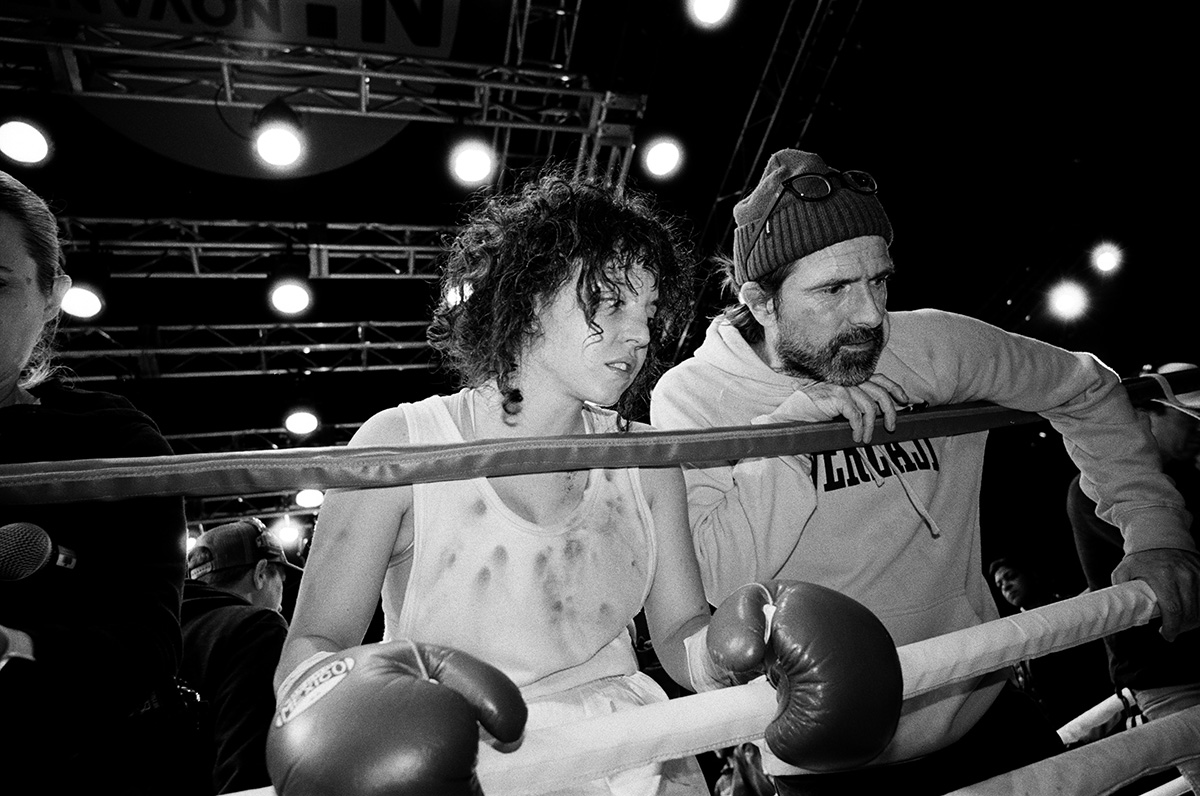
For legendary professional boxer Christy Martin, never in a million years did she expect to see the riveting story of her rapid rise to fame onscreen.
“When somebody first contacted me about turning my life into a movie, I thought they were joking,” Martin said at a recent Golden Globes press event for her movie, “Christy.”
“I was so afraid that my life would be as I call it, Hollywoodized.”
Martin was put at ease once she saw how committed co-screenwriters Mirrah Foulkes, and Australian filmmaker David Michôd were to the material, and how relentless actress Sydney Sweeney was to accurately portray her.
“Mirrah was very fair to me and treated me great on the paper … I feel like this is the most powerful group that could ever come together to tell my story,” she acknowledged.
In “Christy,” viewers see Martin’s combative spirit, in her ongoing quest to win each fight. Under her demanding coach turned manager-husband Jim Martin (played by Ben Foster), Christy is fearless in the boxing ring, yet increasingly troubled as she deals with the pressure of her mother, sexual identity issues, drugs, and a physically abusive marriage that almost ended in death.
“It’s crazy to see anybody, but especially Syd, become me,” she told the Los Angeles Blade. “It’s overwhelming! A little much for a coal miner’s daughter from a small town in southern West Virginia.”
For Sweeney, who is also a producer on the film, playing the courageous lesbian boxer has been a life-changing experience. “This is the most important character I have ever played. It’s the most important story I have ever told or will tell. It’s an immense honor to bring her to life.”
To become Martin, Sweeney worked hard to absorb as much information on her as possible.
“I had the real Christy, and then I had years and years of interviews and fight footage and her book and her documentary on Netflix that I was able to pull from. I like to build books for my characters, to create their entire life, from the day they’re born until the first time you meet them onscreen. So just kind of filling out the entire puzzle of Christy here.”
Sweeney said the many scenes where Martin’s mom couldn’t accept she was gay were immensely challenging to be a part of.
“That was probably one of the hardest scenes for me,” Sweeney noted. “I have very supportive parents, and I can’t imagine what it would be like to not have your mom or dad to turn to ask for help or guidance or just need support. So it was a very difficult scene to process.”
Equally challenging was the rigorous process Sweeney went through in order to become Martin in the movie.
“It was a huge physical transformation for me. I trained for two-and-a-half months before we even started filming, and I put on 35 pounds for the role, so it was a big transformation.”
As difficult as it was to deal with a film that dives into domestic violence, Sweeney was able to shake the character off when she was done at the end of each day.
“I have a rule for myself where I don’t allow any of my own thoughts or memories into a character. So when the moment they call ‘cut,’ I’m back to being Syd, and I leave it all in the scene, and that’s the story that I’m telling. Otherwise I’m just me; so I go home when I’m me.”
Martin hopes that audiences leave the theater with a sense of faith.
“I think we showed a path of how to get out of any situation that you might be in. And also, it’s very important to be true to you. Sometimes that takes a while — it took me a little while — but I’m happy to be true to me. And that’s what we want; the whole story is about being who you are.”
Sweeney would love viewers to walk away and demand to be “Christy Strong.”
“I hope that they want to be kind and compassionate to others around them, and be that helping hand. Christy’s story is singular, and yet her story of triumph, survival and continuation, supports those who are in experiences of domestic violence behind closed doors. She is one of the great champions.”
Sweeney loves that Martin is also a great advocate of new boxing talent. “That spark of life is something that I think at the end of the day, ‘Christy’ is about– it’s the spark to keep going and be who you are proudly.”
Movies
Superb direction, performances create a ‘Day’ to remember
A rich cinematic tapestry with deep observations about art, life, friendship

According to writer/director Ira Sachs, “Peter Hujar’s Day” is “a film about what it is to be an artist among artists in a city where no one was making any money.” At least, that’s what Sachs – an Indie filmmaker who has been exploring his identities as both a gay and Jewish man onscreen since his 1997 debut effort, “The Delta” – told IndieWire, with tongue no doubt firmly planted in cheek, in an interview last year.
Certainly, money is a concern in his latest effort – which re-enacts a 1974 interview between photographer Peter Hujar (Ben Whishaw) and writer Linda Rosenkrantz (Rebecca Hall), as part of an intended book documenting artists over a single 24-hour period in their lives – and is much on the mind of its titular character as he dutifully (and with meticulous detail) recounts the events of his previous day during the course of the movie. To say it is the whole point, though, is clearly an overstatement. Indeed, hearing discussions today of prices from 1974 – when the notion of paying more than $7 for Chinese takeout in New York City seemed outrageous – might almost be described as little more than comic relief.
Adapted from a real-life interview with Hujar, which Rosenkrantz published as a stand-alone piece in 2021 (her intended book had been abandoned) after a transcript was discovered in the late photographer’s archives, “Peter Hujar’s Day” inevitably delivers insights on its subject – a deeply influential figure in New York culture of the seventies and eighties, who would go on to document the scourge of AIDS until he died from it himself, in 1987. There’s no plot, really, except for the recalled narrative itself, which involves an early meeting with a French journalist (who is picking up Hujar’s images of model Lauren Hutton), an afternoon photo shoot with iconic queer “Beat Generation” poet/activist Allen Ginsburg, and an evening of mundane social interaction over the aforementioned Chinese food. Yet it’s through this formalized structure – the agreed-upon relation of a sequence of events, with the thoughts, observations, and reflections that come with them – that the true substance shines through.
In relaying his narrative, Hujar exhibits the kind of uncompromising – and slavishly precise – devotion to detail that also informed his work as a photographer; a mundane chronology of events reveals a universe of thought, perception, and philosophy of which most of us might be unaware while they were happening. Yet he and Rosenkrantz (at least in Sachs’ reconstruction of their conversation) are both artists who are keenly aware of such things; after all, it’s this glimpse of an “inner life,” of which we are rarely cognizant in the moment, that was/is their stock-in-trade. It’s the stuff we don’t think of while we’re living our lives: the associations, the judgments, the selective importance with which we assign each aspect of our experiences, that later become a window into our souls – if we take the opportunity to look through it. And while the revelations that come may occasionally paint them in a less-than-idealized light (especially Hujar, whose preoccupations with status, reputation, appearances, and yes, money, often emerge as he discusses the encounter with Ginsberg and his other interactions), they never feel like definitive interpretations of character; rather, they’re just fleeting moments among all the others, temporary reflections in the ever-ongoing evolution of a lifetime.
Needless to say, perhaps, “Peter Hujar’s Day” is not the kind of movie that will be a crowd-pleaser for everyone. Like Louis Malle’s equally acclaimed-and-notorious “My Dinner With Andre” from 1981, it’s essentially an action-free narrative comprised entirely of a conversation between two people; nothing really happens, per se, except for what we hear described in Hujar’s description of his day, and even that is more or less devoid of any real dramatic weight. But for those with the taste for such an intellectual exercise, it’s a rich and complex cinematic tapestry that rewards our patience with a trove of deep observations about art, life, and friendship – indeed, while its focus is ostensibly on Hujar’s “day,” the deep and intimate love between he and Rosenkrantz underscores everything that we see, arguably landing with a much deeper resonance than anything that is ever spoken out loud during the course of the film – and never permits our attention to flag for even a moment.
Shooting his movie in a deliberately self-referential style, Sachs weaves the cinematic process of recreating the interview into the recreation itself, bridging mediums and blurring lines of reality to create a filmed meditation that mirrors the inherent artifice of Rosenkrantz’s original concept, yet honors the material’s nearly slavish devotion to the mundane minutiae that makes up daily life, even for artists. This is especially true for both Hujar and Rosenkrantz, whose work hinges so directly to the experience of the moment – in photography, the entire end product is tied to the immediacy of a single, captured fragment of existence, and it is no less so for a writer attempting to create a portrait (of sorts) composed entirely of fleeting words and memories. Such intangibles can often feel remote or even superficial without further reflection, and the fact that Sachs is able to reveal a deeper world beyond that surface speaks volumes to his own abilities as an artist, which he deploys with a sure hand to turn a potentially stagnant 75 minutes of film into something hypnotic.
Of course, he could not accomplish that feat without his actors. Whishaw, who has proven his gifts and versatility in an array of film work including not only “art films” like this one but roles from the voice of Paddington Bear to “Q” in the Daniel Craig-led “James Bond” films, delivers a stunning performance, carrying at least 75% of the film’s dialogue with the same kind of casual, in-the-moment authenticity as one might expect at a dinner party with friends; and though Hall has less speaking to do, she makes up for it in sheer presence, lending a palpable sense of respect, love, and adoration to Rosenkrantz’s relationship with Hujar.
In fact, by the time the final credits role, it’s that relationship that arguably leaves the deepest impression on us; though these two people converse about the “hoi polloi” of New York, dropping legendary names and reminding us with every word of their importance in the interwoven cultural landscape – evoked with the casual air of everyday routine before it becomes cemented as history – of their era, it’s the tangible, intimate friendship they share that sticks with us, and ultimately feels more important than any of the rest of it. For all its trappings of artistic style, form, and retrospective cultural commentary, it’s this simple, deeply human element that seems to matter the most – and that’s why it all works, in the end. None of its insights or observations would land without that simple-but-crucial link to humanity.
Fortunately, its director and stars understand this perfectly, and that’s why “Peter Hujar’s Day” has an appeal that transcends its rarified portrait of time, place, and personality. It recognizes that it’s what can be read between the lines of our lives that matters, and that’s an insight that’s often lost in the whirlwind of our quotidian existence.
Movies
Queer Broadway icon gets stellar biopic treatment in ‘Blue Moon’
Ethan Hawke delivers award-worthy performance as Lorenz Hart
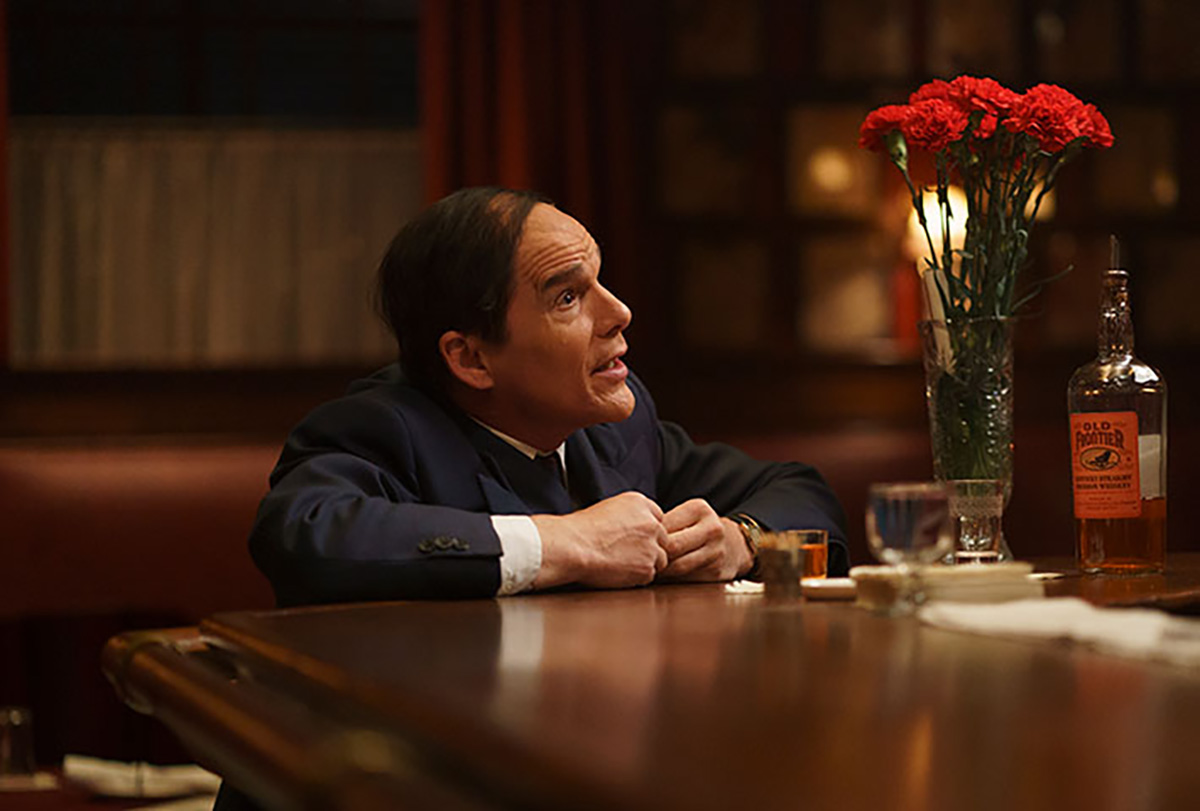
Even if you’ve never heard the name Lorenz Hart, chances are high you’ve heard some of his songs.
A giant of early 20th century Broadway songwriting, he was a lyricist whose complex blend of wit and wistful romanticism – mostly set to music by longtime composing partner Richard Rodgers – became a significant part of the “Great American Songbook,” performed and recorded by countless musical artists in the decades since. Yet despite his success, happiness eluded him; depression and alcoholism eventually hobbled his career, and he died in 1943 – aged only 47 – from a case of pneumonia he caught after passing out in the rain in front of his favorite bar.
His tragic story might seem an odd fit for a screen treatment from maverick director Richard Linklater, but his latest film – “Blue Moon” in theaters as of Oct. 24 – delivers exactly that. It crafts a mostly speculative and highly stylized portrait of Hart (portrayed in a tour-de-force by longtime Linklater muse Ethan Hawke) on a night that was arguably the lowest point in his professional career: the opening night of “Oklahoma!” – the soon-to-be smash hit composed by Rodgers (Andrew Scott) with new partner Oscar Hammerstein III (Simon Delaney) after their two-decade partnership had been tanked by his personal struggles.
In Robert Kaplow’s theatrically crafted screenplay, Hart shows up early for the post-opening celebration – held, of course, at Broadway’s legendary meeting place, Sardi’s – to hold court with the bartender (Bobby Cannavale) and a young hired piano player (Jonah Lees) while steeling his nerves with a few shots of the whiskey he has sworn to avoid. He’s not there to support his old colleague, however; there’s too much resentment swirling inside him for that. Rather, he’s there to connect with 20-year-old college student Elizabeth (Margaret Qualley), whom he has taken on as a protege – and with whom he has convinced himself he is in love, despite the homosexual inclinations that are mostly an “open secret” within his circle of Broadway insiders.
Constructed as a real-time narrative that follows Hart over the course of the evening, Kaplow’s script could almost be described as a monologue – with interruptions, of course – by the songsmith himself; aided by Hawke’s fearlessly unsentimental performance, the film’s presentation of Hart – a queer man grappling with his own self-loathing in a deeply homophobic era – is almost brutal in its exploration of his emotional and psychological landscape. He has walked a thin line for most of his life, alternately hiding and flaunting his inner truth for decades to navigate his world, and the strain has taken its toll; once heralded as one of Broadway’s brightest talents, his reputation has been ravaged by rumor, and he occupies his time by escaping his loneliness through self-denial and liquor. He’s become that guy at the bar who regales you with larger-than-life stories while peppering them with barely concealed bitterness and regret; you can’t help but feel empathy for him, but you’d love to politely extract yourself from the situation at the first opportunity.
There’s something relatable about that situation – from both perspectives – and that’s what keeps “Blue Moon” from becoming insufferable. It’s the kind of movie that makes us cringe, not over the pathetic behavior of its leading character but in anticipation of the next uncomfortable development that’s sure to come as a consequence. He’s a seasoned raconteur, with a polished wit and a prodigious skill with language, and we find ourselves pulling for him both in spite and because of the sense of manic desperation we can feel behind his words.
It’s that almost-grudging empathy we feel for him that gives “Blue Moon” a sense of humanity in the face of what might otherwise seem a relentlessly bleak character study, and keeps us from judging Hart’s impulses toward self-delusion and self-destruction too harshly; and in the end, Linklater’s biopic leaves us with a perspective on his life that emphasizes the legacy he left behind – the poignant lyrics that bespoke an unfulfillable longing for love and connection – and the lasting influence he cast over the generations that succeeded him.
To underscore the latter, the movie imagines a few fortuitous encounters during the festivities at Sardi’s, in which Hart unknowingly drops nuggets of inspiration for such future icons as author E.B. White and a very young Stephen Sondheim. The meetings may or may not not be flights of fancy, but they convey the lasting impact of Hart’s creative contributions in a way that not only feels truthful in spirit but provides some amusing “Easter Egg” moments for buffs of Golden Age Broadway-and-Hollywood lore.
In fact, it should be said that “Blue Moon,” despite the underlying melancholy and the squirm-in-your-seat discomfort that hovers around its edges, is a thoroughly entertaining film; constructed like a play, shot in a style that evokes the cinema of the era (with ongoing references to “Casablanca” to underscore the connection), and wrapped in the nostalgic glow of old Manhattan in its elegant heyday, it bubbles with the kind of wryly sophisticated humor that marked so much of Hart’s own work and thrills us with the feelings it sparks within us as it goes.
For that, we must again point to Hawke’s award-worthy performance as the core element; though he accomplishes a physical transformation into the short-and-balding Hart, and masterfully captures his flamboyant personality, it’s the actor’s understanding of the songwriter’s inner landscape that gives the movie its heart, soul, and painfully human perspective.
Even so, it’s a movie with an entire cast’s worth of superb performances. There’s Scott’s carefully measured Rodgers, balancing genuine friendship with the frustrated impatience of navigating a strained relationship in public. Qualley walks a similar tightrope as the object of Hart’s misguided affections, charming us with authentic fondness and diplomatic compassion, and Cannavale provides a solid ground of streetwise wisdom as the bartender who might be his best friend. Patrick Kennedy’s E.B. White, bringing a welcome note of respect and insight, is also a standout.
Yet while the acting in “Blue Moon” may be excellent across the board, it’s Linklater’s direction that drives his cast’s work and ties it all together; a proven chameleon behind the camera, he embraces the theatrical structure of the screenplay with a perfectionist’s aesthetic, and indulges his fascination with time by encapsulating the portrait of a man’s entire life into the observations that can be gleaned from a single night. More importantly, perhaps, he honors his subject by refusing to define Hart’s sexuality to fit modern sensibilities. We can draw whatever conclusions we want, but in the end we have no reason to reject the songwriter’s description of himself as “ambi-sexual” – even though, with its undercurrent of jealousy between two ex-partners, it’s hard not to take note of some very gay implied subtext.
In the end, Hart’s sexual “label” is irrelevant; his loneliness is what matters, the longing to love – and to be loved – which we all share, regardless of our sexual makeup.
It’s the tragic beauty of that universal pang that comes through in all of the timeless lyrics that Lorenz Hart wrote, and it comes through in Linklater’s excellent movie, too.
-

 U.S. Supreme Court3 days ago
U.S. Supreme Court3 days agoSupreme Court rejects Kim Davis’s effort to overturn landmark marriage ruling
-

 District of Columbia3 days ago
District of Columbia3 days agoCapital Pride files anti-stalking complaint against local LGBTQ activist
-

 Movies5 days ago
Movies5 days agoSuperb direction, performances create a ‘Day’ to remember
-

 Theater4 days ago
Theater4 days agoAstounding ‘LIZZIE’ builds on legendary axe murder tale

